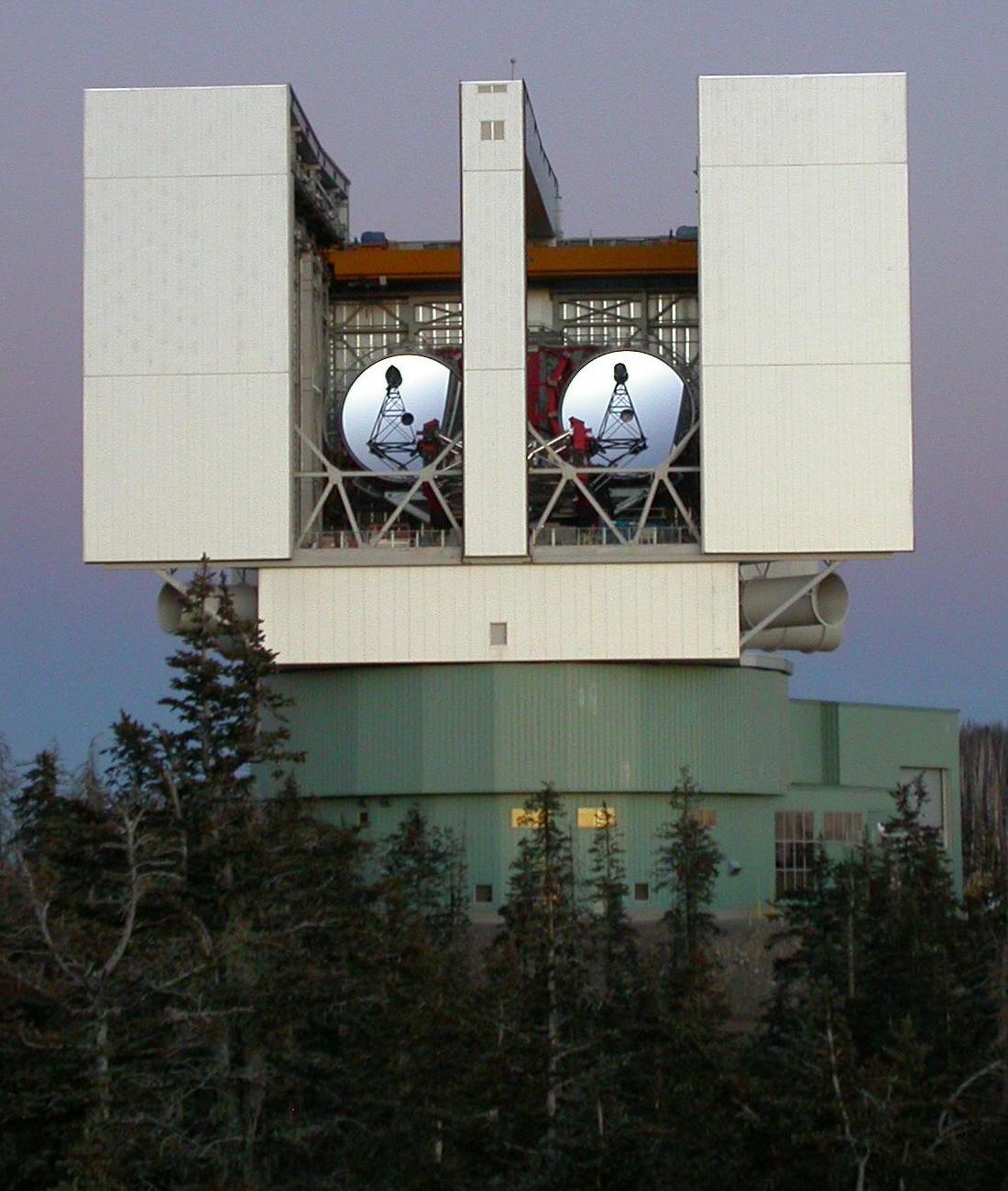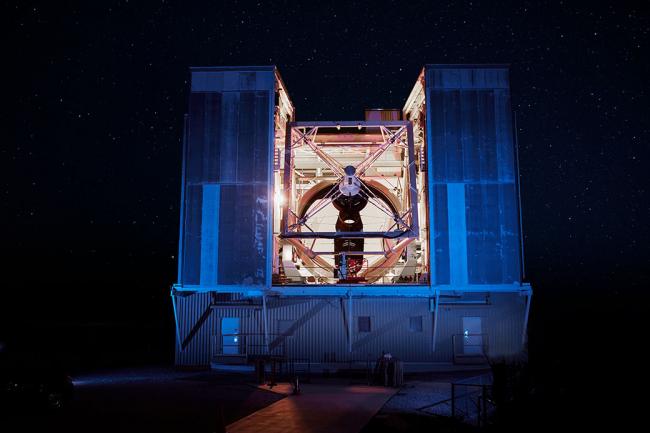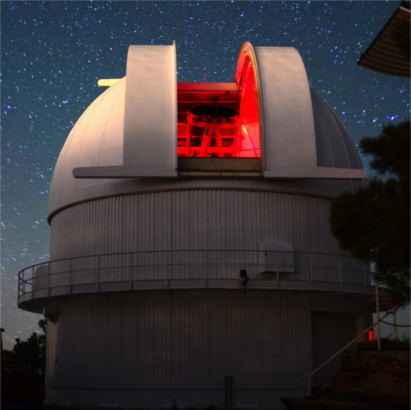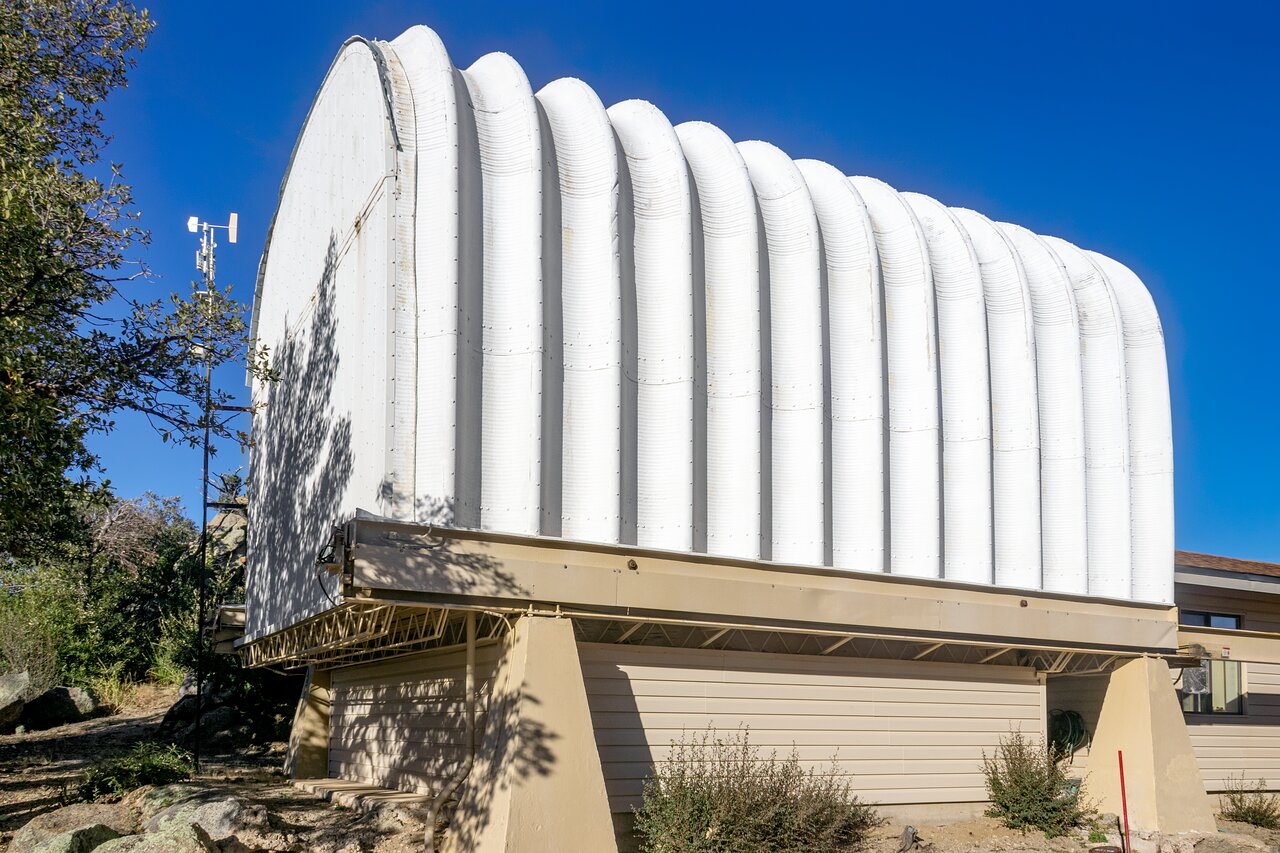Large Binocular Telescope (LBT)
Located on Mt Graham, the Large Binocular Telescope (LBT) observes using two 8.4m-mirrors on a common mount.
As a partner, the University of Arizona’s Steward Observatory has guaranteed observing time on the LBT. Transient science on LBT is done using primarily the Multi-Object Double Spectrographs (MODS), a pair of optical spectrographs/imagers, to observe transients and their hosts. In exceptional cases -- e.g. the observations of SN 2023ixf taken in early Summer of 2023 -- the Potsdam Echelle Polarimetric and Spectroscopic Instrument (PEPSI), a fiber-feed high-resolution optical echelle spectrograph, can be used to observe very bright transients in extremely high resolution.




